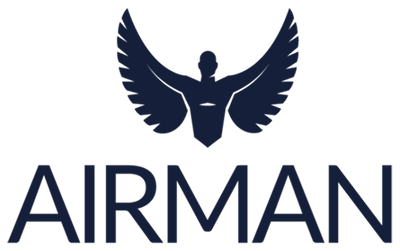
Why choose a performance pilot shirt?
What are performance pilot shirts?
In a nutshell, performance pilot shirts use modern, technical fabrics to create a garment that is more practical, aesthetically pleasing and more durable than traditional uniforms.
What are the benefits
Less time ironing:
When it comes down to selecting a shirt from the wardrobe, most aviators will avoid shirts that require laborious ironing. The high-tech materials used in performance pilot shirts allow for minimal ironing, making them an attractive proposition for busy pilots. Some shirts, such as our R series, require no ironing at all – a game changer for busy commercial pilots.
This makes sense – on average we spend four hours ironing our shirts per month. With lives only getting busier, and many pilots having to balance a busy roster with other commitments, having a shirt that saves you half a working day per month is a huge asset.
Resistant to creasing:
Pilot shirts constructed from traditional materials look great as you step out of the front door but will begin to crease up as a result of the rigours of a pilot’s day. Constant reaching for the overhead panel, carrying shoulder bags, moving around in seat and removing your shirt for rest (for long haul pilots) will cause the garment to crease up over the shift. The aesthetics of the shirt therefore decrease over time, leading to some aviators looking somewhat unkempt at the end of a shift.
Due to the material composition, performance pilot uniforms tend to be far more resistant to creasing, meaning the shirt continues to look as good as when you put it on for the first time.
Durability:
Due to the use of advanced synthetics, performance pilot shirts tend to last. These fabrics also are more stain resistant, so you lose less shirts to coffee spills and pen marks than you would using traditional shirts.
Subtle Stretch:
Using modern performance fabrics often allows for more stretch to be built into pilot shirts. Contrary to popular belief, elasticity is not built into pilot shirts so that aviators can achieve a ‘spray on’ look. Rather, stretch fabrics make for greater comfort when reaching or moving around in seat, without having to select a shirt that is oversized.
What’s more, this elastic makes the garment more forgiving for different body shapes, allowing the shirts to fit better. For instance, if a pilot has particularly broad shoulders in relation to his collar size, a performance shirt would accommodate this more effectively than a shirt made out of traditional fabric.
Of course, this doesn’t remove the need to select the correct fit, with most pilot shirt manufacturers offering slim-fit, tapered and fitted versions of their pilot shirts.
Brilliant white:
For all their positive qualities, traditional textiles such as cotton tend to fade over time, leading to a greying or yellowing after years of use, limiting the life cycle of your pilot shirts. Conversely, performance fabrics start at a brilliant white, and fade considerably less quickly, meaning you keep that ‘out the box’ feeling for longer.
Less Transparency:
Due to the materials used, performance fabrics tend to let less light through than their traditional counterparts, meaning that you don’t necessarily need to wear undershirts under your pilot shirts. Likewise, if you choose to wear undershirts anyway, they are less likely to show through performance pilot shirt fabrics.

What’s the catch?
Traditionally, people have avoided non-natural fabrics from the perspective that they are hot, sweaty and uncomfortable on the skin. Indeed, with many low-quality pilot shirt manufacturers striving to save cost, many cheap nylon or polyester shirts do just that.
However, the techniques that textile manufacturers are using to construct fabrics has modernised greatly, with some blends of synthetics now ‘bucking the trend’, no longer having the negative properties of these cheap, antiquated synthetic fabrics.
It is therefore now possible to build high-tech shirts that have all the benefits of a performance shirt, whilst still maintaining a cotton-like softness on the skin.
Conclusion:
Though it might take some time to filter through, performance pilot shirts are the future. From an airline perspective, the shirts last longer making them more cost effective. What’s more, their pilots maintain their appearance throughout the day. From a pilot’s perspective, these shirts are more comfortable, stylish and practical than traditional shirts, saving individuals precious hours per week.
For those who are interested in trying out a performance pilot shirt, check out the R Series – a true game changer for pilots worldwide. As an introductory offer, these shirts are currently 20% off with the discount code FUTURE20.

